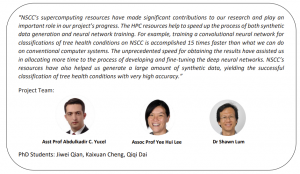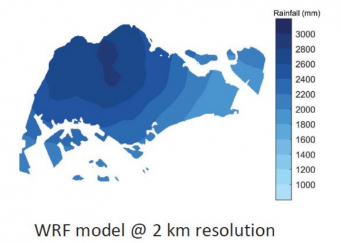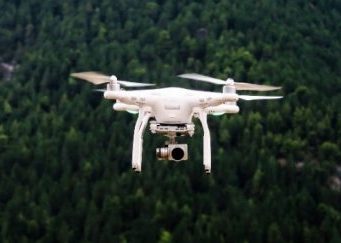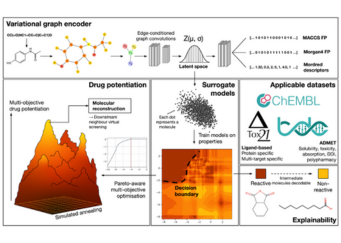Researchers from NTU leverage high-performance computing to develop tools to assess tree health in order to prevent tree falls.
For Singapore’s thriving, lush greenery, the number of incidents of falling trees or ‘tree failure’ — the structural deterioration or breakage of any part of a tree — has tumbled by almost nine-fold over the last two decades, from 3,100 in 2000 to 339 in 2020. While it is impossible to completely prevent tree-related incidents, researchers are working on new technologies to minimize the number of incidents.
Radar, ultrasound and electrical resistivity technologies are currently being used for non-destructive tree health assessments to detect structural defects such as cracks, decays and cavities inside tree trunks. However, these technologies are both labour and time-intensive therefore limiting their use for regular health monitoring of trees and may not be optimal for screening tree health on a massive scale.
To overcome the current drawbacks of regular tree health assessments, a team of researchers from Nanyang Technological University (NTU) Singapore’s School of Electrical and Electronic Engineering are tapping on NSCC’s supercomputing resources to develop a deep learning-augmented microwave radar system for rapid detection of tree defects and imaging of tree interiors.
Unlike the current technologies that leverage circular scans around tree trunks, the developed radar allows scans to be performed in a straight trajectory centimetres away from the tree trunks. This reduces the time and labour costs involved in conventional measurement techniques. The system then processes the measured signal strengths through advanced signal processing and deep learning techniques to assess the health condition of the tree, i.e. whether it is healthy or has a cavity or decay inside. Once trees with defects are spotted, the developed radar would then image the tree interior via image processing and deep learning techniques and provide information on the severity of defects, which helps the arborists determine the next stage of action, i.e. whether to treat it or cut it down.

To find out more about the NSCC’s HPC resources and how you can tap on them, please contact [email protected].
NSCC NewsBytes June 2022
Other Case Studies
Enhancing Weather Prediction in Singapore: Leveraging Climate Model Simulations for Precision
Researchers from NUS Tropical Marine Science Institute are leveraging supercomputing to fine-tune Weather Research and Forecasting (WRF) Model and downscale hundreds of years of...
Keeping drones safe in urban airspaces
Researchers from NTU tap on high performance computing to identify hazardous airspaces through urban weather simulations in order to facilitate effective route planning and...
Advancing Drug Discovery Research using NSCC HPC resources
Researchers from Nanyang Technological University (NTU) are applying variational graph encoders as an effective generalist algorithm in computer-aided drug design (CADD)....


